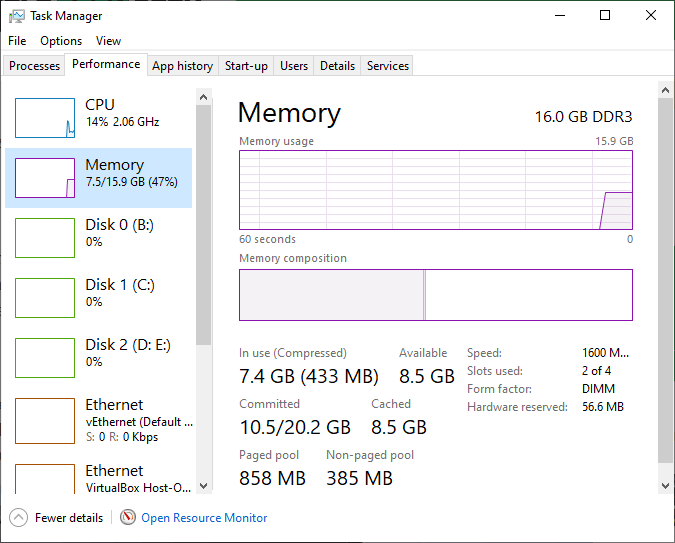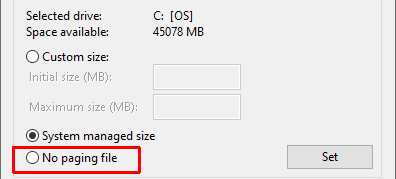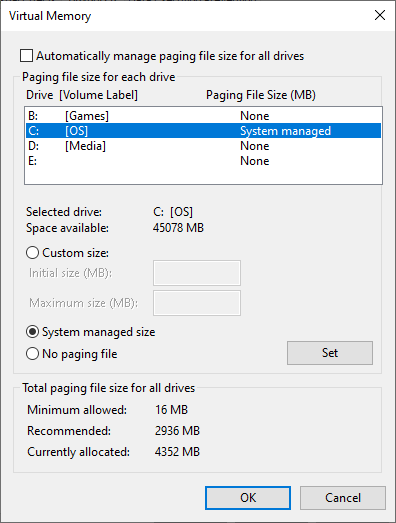The Windows Page File is a special file that contains data that cannot be stored in RAM when limits are reached. Your system RAM has a limit. If your system attempts to exceed this limit, it may pass some data to the site file.
This is not the most efficient way to manage system memory. However, a site file is a must and will ensure the smooth running of your system.
So here’s what a Windows 10 site file is and how a site file works.
What is a Page File?
Your computer has a set amount of RAM or random access memory. Not sure how many are in your system? Enter system information in the Start menu search box. When the System Information window opens, scroll down to locate Installed Physical Memory (RAM). This includes the amount of RAM installed in your computer.
RAM contains all information related to an open program, such as a storage workspace. RAM helps keep your computer running at speed by accessing data frequently. Plus, RAM is faster than your old hard drive and even faster than your SSD.
You want to use RAM. This means that you want enough RAM to keep your system fast and enough data not to slow you down. But as you begin to run out of RAM, your computer may take longer to complete normal tasks.
When RAM is low, the page file enters the game.
A page file (also called a swap file) is a file on your hard disk. When your RAM is full, Windows will move some redundant data to the paging file. As such, a Web file acts as a type of virtual memory that allows data to be exchanged between the hard disk and RAM.

Data transfer for these files frees up active RAM space for the applications you use (it can help them faster and smoother) and can be easily retrieved from the file page when you open windows.
The file page is managed separately. You do not need to edit the file settings on the site, except in certain situations. The site file is usually located between a minimum of 1.5 times and a maximum of three times your RAM installation.
For example, a system with 4GB RAM would have a minimum of 1024x4x1.5=6,144MB [1GB RAM x Installed RAM x Minimum]. Whereas, the maximum is 1024x4x3=12,288MB [1GB RAM x Installed RAM x Maximum].
Also, enlarging the site file to the maximum size is not good because it can cause system instability.
Can I deactivate a site file?
Rather, disabling the site file to improve system performance is a myth. If you have a system with relatively low memory, disabling the ability to transfer some data to the hard disk will only impair overall performance (even though you will save a few gigabytes of hard disk storage).

In the worst case, deactivating the site file can cause programs to crash when you run RAM, because there is nowhere to go. Falling programs can cause further system crashes, so it doesn’t pay off.
Even with 16GB of RAM installed on my computer, I kept the paging file!
It runs under virtual memory
A common problem that warns people against the presence of a paging file is a lack of virtual memory. You may encounter an error message such as this:
“Your system is under virtual memory. Windows will increase the size of the virtual memory paging file. During this process, memory requests for certain applications may be denied. See Help for more information.”
This message means that when your RAM is full, your site file is also broken at the seam. Therefore, you must increase your virtual memory, such as a page file. Remember that interfering with your site’s file is not uncommon, but it is one of the exceptions.
How to add a page file size?
If you need to increase the size of the site file, you can adjust it manually. As mentioned above, you should only do this in exceptional cases.
1. Head to Control Panel > System and Security > System, then select Change Settings.
2. Switch to the Advanced tab. Under Performance, select Settings.
3. Switch to the Advanced tab. Under Virtual Memory, select Change.
4. Uncheck Automatically manage paging file size for all drives.
5. Increase the size of the paging file within 1.5 to 3 times your installed RAM. Press Set when you’re ready.

Press OK to leave the Virtual Memory management window. You have now changed your page file size.
Upgrade Your RAM For Better Performance
Upgrading a site file is only a temporary solution to a virtual memory problem. If you have always met the virtual memory limit and find that you need to modify the site file, you should consider installing a large amount of RAM.
Installing more RAM is a cost-effective way to increase the speed and capacity of your system. Even better, there are countless tutorials on the internet to tell you how to do it! No wonder upgrading RAM is one way to make sure your computer runs so fast!
